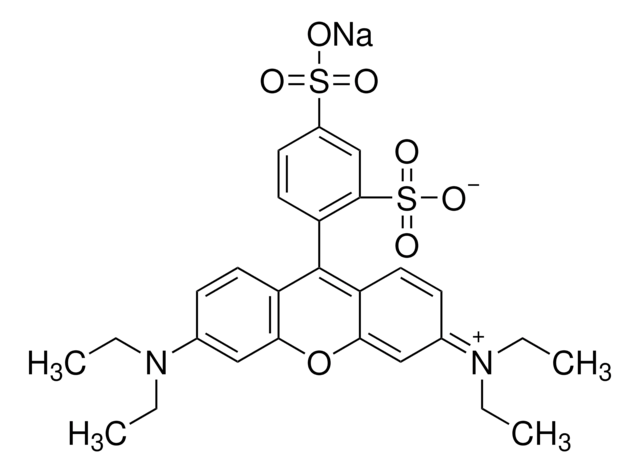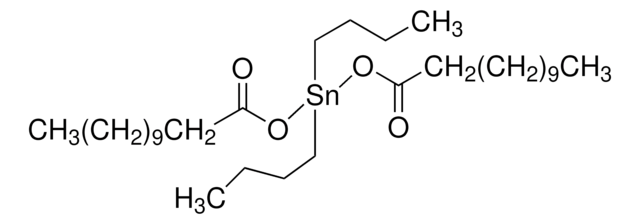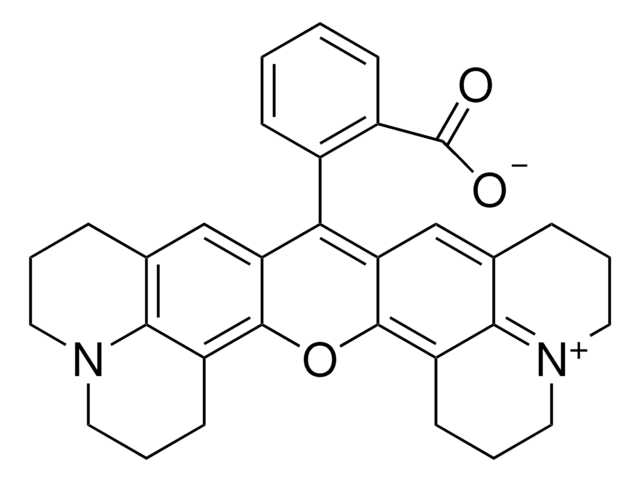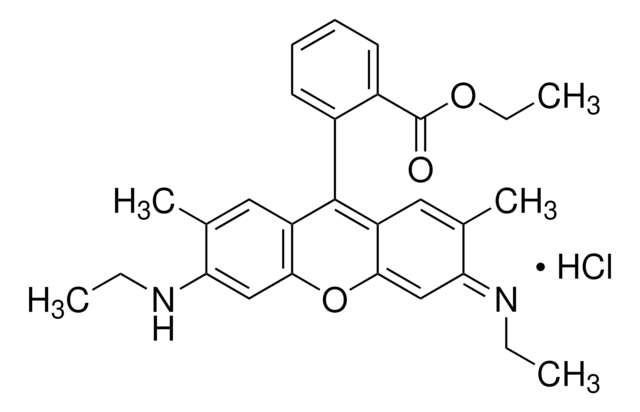Kluczowe dokumenty
341738
Sulforhodamine B, acid form
Dye content 95 %
About This Item
Polecane produkty
Formularz
solid
Poziom jakości
skład
Dye content, 95%
mp
>300 °C (lit.)
λmaks.
558 nm
ciąg SMILES
CCN(CC)c1ccc2c(OC3=CC(\C=CC3=C2c4ccc(cc4S([O-])(=O)=O)S(O)(=O)=O)=[N+](/CC)CC)c1
InChI
1S/C27H30N2O7S2/c1-5-28(6-2)18-9-12-21-24(15-18)36-25-16-19(29(7-3)8-4)10-13-22(25)27(21)23-14-11-20(37(30,31)32)17-26(23)38(33,34)35/h9-17H,5-8H2,1-4H3,(H-,30,31,32,33,34,35)
Klucz InChI
IOOMXAQUNPWDLL-UHFFFAOYSA-N
Szukasz podobnych produktów? Odwiedź Przewodnik dotyczący porównywania produktów
Powiązane kategorie
Opis ogólny
Zastosowanie
Kod klasy składowania
11 - Combustible Solids
Klasa zagrożenia wodnego (WGK)
WGK 3
Temperatura zapłonu (°F)
Not applicable
Temperatura zapłonu (°C)
Not applicable
Środki ochrony indywidualnej
Eyeshields, Gloves, type N95 (US)
Wybierz jedną z najnowszych wersji:
Masz już ten produkt?
Dokumenty związane z niedawno zakupionymi produktami zostały zamieszczone w Bibliotece dokumentów.
Klienci oglądali również te produkty
Produkty
Developed in the last several years, fluorescence quenching microscopy (FQM) has enabled rapid, inexpensive, and high-fidelity visualization of two-dimensional (2D) materials such as graphene-based sheets and MoS2.
Graphene has emerged as the new wonder material. Being only one atom thick and composed of carbon atoms arranged in a hexagonal honeycomb lattice structure, the interest in this material has exploded exponentially since 2004 when it was first isolated and identified using a very simple method.
Nasz zespół naukowców ma doświadczenie we wszystkich obszarach badań, w tym w naukach przyrodniczych, materiałoznawstwie, syntezie chemicznej, chromatografii, analityce i wielu innych dziedzinach.
Skontaktuj się z zespołem ds. pomocy technicznej











